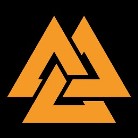|
The giant's giant
|
|
| Hasforjs97 | Date: Thursday, 19.07.2012, 20:27 | Message # 1 |
 Space Pilot
Group: Translators
 Spain
Spain
Messages: 107
Status: Offline
| Well, I was exploring the Galaxy again, and I found something I didn't believe possible. Its an ice giant orbiting a gas giant  . I didn't think a giant could be a moon, but there is a 76000km moon in a very inclinated orbit to a 126000km planet. And the think that has most surprised me is that this planet isn't <in a galaxy far far away>, no, it's just in Gamma Orionis, a star I see every night in the winter... So I didn't think there was such a strange thing in a relatively close star. . I didn't think a giant could be a moon, but there is a 76000km moon in a very inclinated orbit to a 126000km planet. And the think that has most surprised me is that this planet isn't <in a galaxy far far away>, no, it's just in Gamma Orionis, a star I see every night in the winter... So I didn't think there was such a strange thing in a relatively close star.
My desktop:
Pentium G3260 @ 3.30GHz
8.0 GB DDR3
AMD Radeon HD 5570 1GB
|
| |
| |
| apenpaap | Date: Thursday, 19.07.2012, 22:18 | Message # 2 |
 World Builder
Group: Users
 Antarctica
Antarctica
Messages: 1063
Status: Offline
| It's a double gas giant, a new feature of 0.96. A pair like that can form when two gas giants come close to each other during the period in the formation of the solar system when they migrate at exactly the right speed and catch each other.
I occasionally stream at http://www.twitch.tv/magistermystax. Sometimes SE, sometimes other games.
|
| |
| |
| Hasforjs97 | Date: Thursday, 19.07.2012, 23:03 | Message # 3 |
 Space Pilot
Group: Translators
 Spain
Spain
Messages: 107
Status: Offline
| Seems interesting  It can happen with rock planets? Because I'm creating a fictitious system and I made it... It can happen with rock planets? Because I'm creating a fictitious system and I made it...
My desktop:
Pentium G3260 @ 3.30GHz
8.0 GB DDR3
AMD Radeon HD 5570 1GB
|
| |
| |
| apenpaap | Date: Thursday, 19.07.2012, 23:05 | Message # 4 |
 World Builder
Group: Users
 Antarctica
Antarctica
Messages: 1063
Status: Offline
| Yes, I've seen double terrestrial planets too. Sometimes because of different densities the one the game calls the moon is actually bigger than the one it calls the planet, even.
I occasionally stream at http://www.twitch.tv/magistermystax. Sometimes SE, sometimes other games.
|
| |
| |